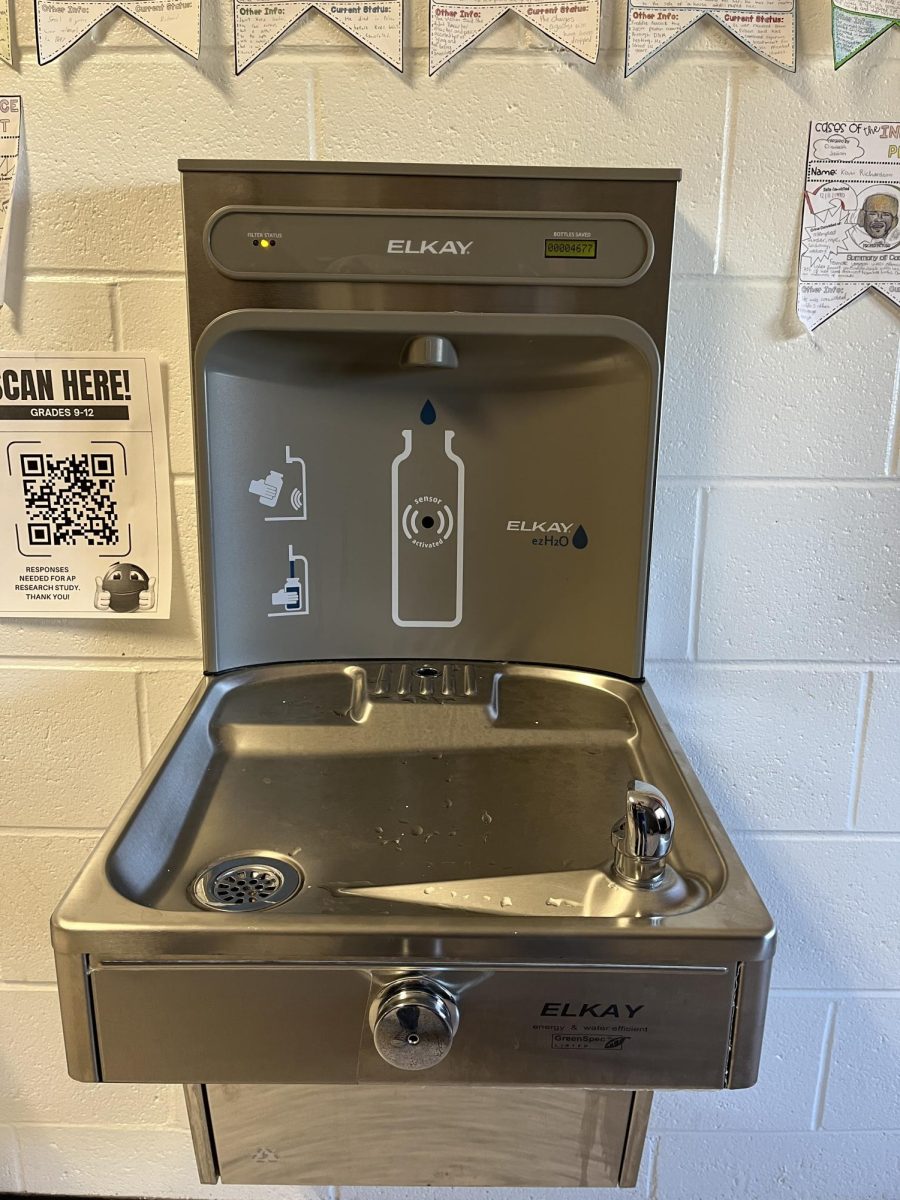There’s one growing problem that’s going unnoticed in the North Forsyth community: water quality. North Forsyth High School is lucky to have water fountains, and especially so many. However, have you ever wondered what’s actually in the water?
Four things were tested: hardness, nitrogen, phosphates and pH. The three fountains that were tested were the one at the bottom of the 200s hall, the one between the bathrooms in the language hall and one of the upper 800s fountains, closer to the front of the school.
The results were not overwhelmingly negative, but still slightly concerning. All three of the fountains were found to be depleted of or deficient in nitrogen. Although, it was difficult to read the change in color because the water had a mildly brown tinge.
According to the test, the 200s and 800s fountains both had a hardness of about 40 ppm (parts per million). The language hall fountain had a hardness closer to 80 ppm. An optimal water hardness level for drinking water is between 60 and 120 ppm, meaning that the two fountains at 40 ppm have water that is slightly too soft.
The pH of all of the fountains was between 5 and 6, and the 200s fountain was closest to 6, and the fountain in the language hall was closest to 5. This means all of the water from the fountains is slightly basic, as 7 would be true neutral. An ideal pH for drinking water is generally between 6.5 and 8.6
It’s not just the water quality that students should be concerned about. In Epidemiology, students do a lab where they swab different surfaces around the school and check for bacterial growth. Two different students swabbed the inside of the 200s fountain, where the water comes out. Meighan Bassett, the Epidemiology teacher at North, elaborates on the results: “After a week, there were several bacteria growths in the Petri dishes.”
Water quality in a high school is important, especially when students and faculty alike drink it. They should know what’s in the water they’re drinking and what’s lacking in it, too.



